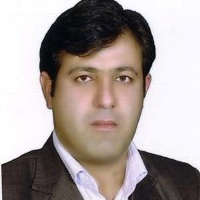Exploring the process of formation and changes of informal settlements in the rural areas of Tehran metropolis
One of the challenges of unbalanced population growth and activities in villages located at the regional level and urban peripheries is the formation of unplanned settlements or informal settlements and similar limited areas in encroached or unsuitable agricultural lands in rural areas.The Tehran region has also witnessed various and numerous transformations in population, social, economic, and physical-spatial fields in the surrounding rural areas and its urban peripheries over the past few decades. Due to natural population growth and migration from villages and cities to the Tehran urban area, the population in this region has significantly increased. As a result, due to economic factors influencing location selection, low-income populations have settled in informal settlements in villages located within the immediate vicinity of Tehran. Given these issues, the aim of this research is initially to investigate the trend of formation and expansion of informal settlements in villages located within peri-urban spaces and the urban periphery of Tehran over the past half-century. Furthermore, focusing on examining demographic changes that have occurred in these villages over the past three decades, this research aims to present a current picture of their situation and provide spatial patterns for rural settlements while predicting potential hotspots for informal settlement formation.
This research is classified as applied research based on its objective, descriptive-analytical in terms of content, and qualitative-quantitative in terms of methodology. The necessary data was collected through document reviews, library research, official information, and statistics. To identify, map out, and present a current picture of demographic changes occurring in rural areas during the period between1996-2016 (the Iranian calendar), data from 283 villages with populations were analyzed using SPSS software. In order to identify spatial patterns of rural settlements and predict population density hotspots for potential informal settlement formation within these areas, interpolation methods and kernel density estimation were utilized within a Geographic Information System (GIS) environment. The study area covers an area of 5920 square kilometers centered around Tehran city.
The analysis of the trend of formation and expansion of informal settlements in rural spaces within Tehran's region shows that since the mid- 1940 s apart from land reforms that transformed Iran's land system freeing up labor force along with rapid urbanization due to industrial development led to widespread rural-to-urban migration resulting in the emergence of informal settlements in surrounding towns and villages during this decade. During 1975-1985 two significant events; Islamic Revolution(1979) followed by Iraq-Iran war (1980-1988) played a crucial role in demographic changes leading to informal settlement formation. In subsequent years after 1996 until 2006 migration intensified towards suburban areas from major cities. People unable to afford housing especially in Tehran city moved towards creating new settlements in surrounding villages near Tehran. From 2016 on wards generally there has been a much stronger tendency towards rural populations moving towards larger villages mainly located in semi-southern plains near major cities' suburbs close to other economic centers.Examining population density levels within densely populated rural areas located within Tehran's periphery during 1996-2016 census period revealed that by 2016 population density was at 50 individuals per hectare which increased to 61 individuals per hectare by 2016 reaching close to 85 individuals per hectare by 2016 with a projected increase exceeding 168 individuals per hectare by 2026.Investigating the makeup and spatial patterns of population density in the settlement areas of villages located within the vicinity of Tehran also shows that, in general, the rural population tends to move towards larger villages more intensively on the outskirts of economic centers around Tehran and other urban centers in the region. The highest population density is observed first in villages surrounding urban areas located southwest of Tehran, then in villages southeast of Tehran, and with less intensity in south Tehran.
In the informal spaces around cities due to lower land and housing prices in rural areas, weaknesses in rural management control over construction, land speculation, proximity to the main city, and availability of minimum living facilities in villages have led to an increasing trend towards informal settlement patterns in villages. The housing system in these areas is heavily influenced by the main city and has been affected by various changes and functions.Neglecting and ignoring this settlement pattern in villages will not only have significant consequences for the villages but also pose a serious threat to the city and its residents. In other words, these villages cannot be considered separate from metropolitan areas and should be taken into account in planning processes (redevelopment or empowerment plans related to informal settlement areas) because these villages are constantly connected to the main city and are considered part of the urban area.Keywords: peri-urban villages, informal settlement, spatial pattern, Tehran.
-
An analysis of the quantity and quality of tourism services in Zanjan province
Mahdi Charaghi, Hossein Tahmasebi Moghaddam*, Mohammadreza Nemati, Saeed Nasiri Zare
Journal of Applied Researches in Geographical Sciences, Autumn 2025 -
Examining the role of tourism on the social health of the elderly, case study: Asara district, Alborz province
Mohammadreza Nemati, *, Mehdi Feyzolahpour, Mohammadjavad Abbasi
Journal of Economic geography research, Spring 2025 -
Analyzing the effects of tourism entrepreneurship on the reconstruction of rural spaces (Case Study: Rural Settlements of Avaj township,, Qazvin Province)
Manijeh Ahmadi *, , Saeed Shahsavand
Journal of Economic geography research, Winter 2025 -
Analyzing the Regularities of the Formation and Expansion of Informal Settlements in Rural Areas with an Emphasis on the Privacy of Metropolises (Case Study: Villages within the Privacy of Tehran Metropolis)
, Hoseein Farahani *, , Mahdi Cheraghi
Journal of Rural Research, -
Evaluating the Effectiveness of Rural Employment Credits in Developing Sustainable Entrepreneurship in the Agricultural Sector (Case Study: Zanjan City)
Leila Hasanloo *, , Mahmoud Hasanloo
Journal of Sustainable Rural Development, Autumn and Winter 2024 -
بررسی و تبیین مفهوم، ابعاد و نقش سرمایه اجتماعی در توانمندسازی سکونتگاه های غیررسمی
سجادصالحی، شیما عمیدی
ماهنامه دهیاریها، فروردین و اردیبهشت 1398




